GURPS CthulhuPunk by Falconier111
| 1 | Introduction |
| 2 | World |
Introduction
Original SA postWhat are two great tastes that taste great together? I don’t know either. You get this instead.
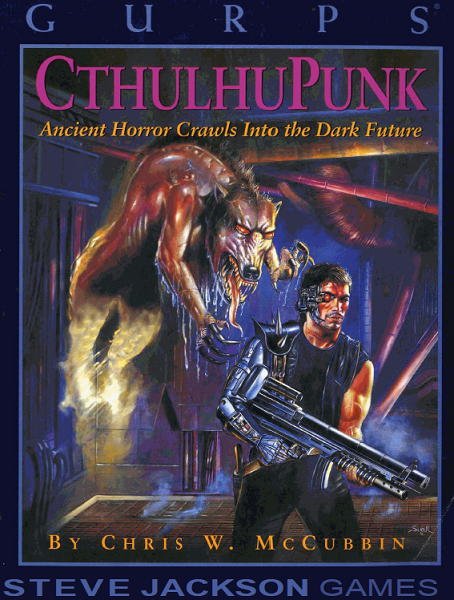
Introduction and 
In 1995, Chaosium licensed Call of Cthulhu out to Steve Jackson Games for use in their own GURPS game line. But not for a direct adaptation, no; got to avoid direct competition, you understand. Instead they decided to mash it up with Cyberworld, GURPS’s pet cyberpunk setting, for reasons that remain blessedly obscured to mortals. After conducting foul ceremonies culminating in the ritual sacrifice of a Wizards of the Coast employee, probably, they summoned another GURPS awkward marriage like Zombieland, USA – except this one seems quite a bit better put together. Let’s take a look, shall we?
“the first two lines of GURPS Cthulhupunk” posted:
CthulhuPunk. The Cthulhu Mythos meets cyberpunk. At first glance, it might seem an unlikely combination.
Yeah, book, no foolin’. The author’s reasoning goes like this: fiction about both the 20s and 30s and about cyberpunk both feature impoverished and oppressed masses, flashy and dramatic criminals, revolutionary new technology, and creeping, authoritarian power structures. When you throw Lovecraft in to that first category, both genres deal with fundamentally hopeless worlds where the efforts of the individual don’t truly matter and where incomprehensible, distant forces shape their lives with or without their knowledge. Protagonists can’t hope to overturn those forces (and usually don’t even try), but they can fight those forces and win; after all, even Lovecraft had Ol’ Squidly himself meet his (temporary) end at the hands of a motorboat, and the Treasury Department disappear Innsmouth’s population and dynamite the Deep Ones’ reef off the coast. That, then, is where the PCs figure in: while complete victory is beyond them, they can go up against local threats and take them down, keeping themselves and the people around them alive a short while longer. Fair enough, let’s see how the premise holds up.
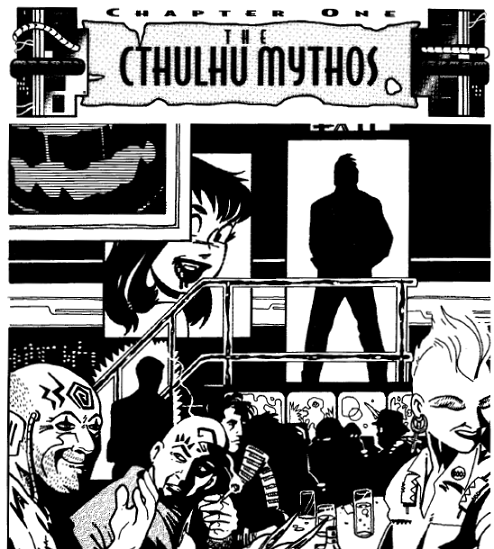
Hey, it’s Vampironica!
The art in this thing is amazing – real gonzo, lots of blood and tentacles and cybernetic bits, appropriate stuff to the setting. The layout, on the other hand… ehh, it’s fine. It combines the standard GURPS Third Edition main-column-and-sidebars I’ve run into elsewhere with the occasional unexpected lurch into a two-main-column format; a bit confusing, but I’ve seen worse. As for the typography, it’s pretty obvious they scanned the book with word recognition software when converting it to a PDF; the text seems to switch font every few words and creative misspellings pop up wherever the software got confused (either that or they call the continent flfrica). I mean, praise the Gate, Key, and Guardian that I can copy and paste text from it, but it sure looks hilarious. I feel bad about taking points off for this one, given it’s a mechanical error rather than a mistake on the part of the writer, so I won’t. Instead, I’ll list my favorite misspelling from that section at the end of each part of this review. See if you can tell what each one used to be!
There’s the legally-required short story at the start of each chapter to introduce you to the setting, but…
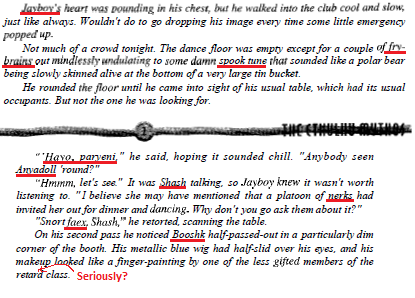
Yeah, no.
The first chapter covers the Cthulhu Mythos in general in a brief 20 pages. I’m going to go out on a limb and assume you know the general outline, so I’ll gloss over most of this. After explaining the existential horror that underlies the whole thing, the author lists out notable gods, grimoires, locations, and artifacts, blazing through its history as a concept and advice for GMs trying to role-play incomprehensible ancient monstrosities before culminating in a timeline that links everything together. By far the most interesting part of the chapter lies in the last set of sidebars, which examines how and why this stuff could’ve slipped under the radar past modern information technology and remained secret – and it appears to have been written in isolation from the next chapter.
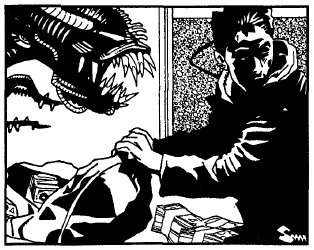
World-class home defense technology.
Let’s take it from the top. Provided information is in normal font, later setting information is in italics.
- They have been forgotten; good old human ignore-it-until-it-goes-away instincts kick in every time people stumble across Mythos activity, keeping the broader public ignorant. While this factor can keep such discoveries obscure, it can’t explain why the broader public remains completely ignorant of Cthulhu and friends. The broader public isn’t terribly well-informed; archaeology has largely been defunded, the media has become sensationalized and focused on matters closer to their audience, and most people only consume media of immediate interest to themselves [insert
 here]. On the other hand, a few subcultures do know a bit about Mythos stuff, enough for a fake Necronomicon to make the rounds on shadier parts of the web.
here]. On the other hand, a few subcultures do know a bit about Mythos stuff, enough for a fake Necronomicon to make the rounds on shadier parts of the web.
- They have been explained away; the general public knows a little bit about prehuman civilizations and other assorted weird shit, but most of the really juicy stuff – and any of it that’s still active – gets covered up. As mentioned above, there’s a little bit of knowledge distributed here and there, but there are forces out there either opposed to the existence of such things or dedicated to keeping them quiet.
- They have been hidden; various supernatural forces have collectively kept their existence quiet. In this setting, most such supernatural forces are either too disorganized or just don’t care enough to interact with human society at all, let alone manipulate it.
- They have been suppressed; human governments, organizations, and conspiracies have collectively hidden the existence of Cthulhus. They might do this out of fear of the consequences if news got out, or they may be using this knowledge to their own benefit. This one is probably the best fit for the setting. Various groups do know about
 , but everybody has a very different approach to it, and even then most groups still aren’t in on the secret.
, but everybody has a very different approach to it, and even then most groups still aren’t in on the secret.
I get the feeling the author stole most of this chapter from CoC’s setting bible and reworded it for public consumption. Oh well, it gets the job done.
As an aside, I just realized: most surviving copies of ancient, forbidden texts in Cthulhuoid settings were printed, not hand written – not just here, but in general. Can you imagine? Taking a look at a book about summoning demons from beyond the stars and deciding, "I'm gonna sell this on the mass-market!"
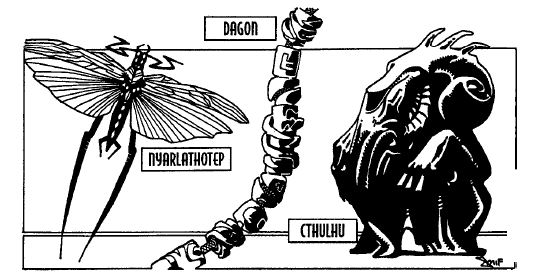
A picture of idols/worship aids for various cults. I like it, gives a visual reference point for GMs and players
Typo of the Day: hov e ;
Next Time: Cyberworld setting information; you can fit an entire color magazine into 500 kB.
World
Original SA postSo, uh, let's talk about another setting involving imperialism!

World
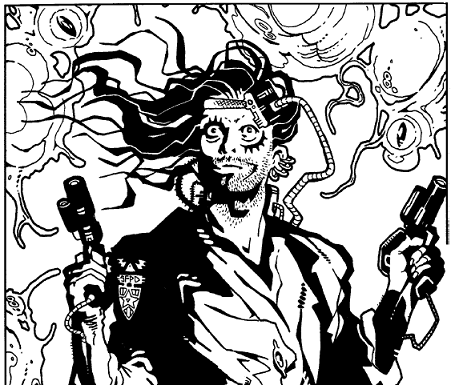
That wasn’t weed.
Setting information! I lied last time, I decided to go through this section setting-technology-culture, all of which are packed together in one fat chapter. Apparently this section just restates stuff from the Cyberworld sourcebook with an emphasis on how it might interact with the Mythos. Given just how much setting information it dumps on you, that sourcebook must be absolutely titanic.

I didn’t enjoy 2017 much either, but it wasn’t THAT bad.
The current year is 2040… something, I couldn’t find an exact date. Cyberworld sure wasn’t shy about kicking its alternate history off; the first event listed in the timeline this book provides (Boris Yeltsin’s assassination) happened one year after this book was published, and the two big factors that shaped Cyberworld should have come and gone by now. The first was a superbug called Tolliver’s Disease (and several nicknames, including my favorite, “the Toller”) that killed over 1 billion people and caused societal collapse in many parts of the world. While first world nations were able to get access to the cure pretty quick once it came out, but much of the Third World couldn’t get their hands on it fast enough to keep their governments from collapsing – meaning we’re back to Darkest Africa (and India) again  (we’ll cover what’s messed up about THAT later). The second big event was a massive market crash in 2006, which was… unfortunately prescient, but this one was a lot more severe than the Great Recession – bad enough to kill millions due to its economic and social repercussions. Even decades later, most national currencies have been superseded by their corporate equivalents. What did they call it?
(we’ll cover what’s messed up about THAT later). The second big event was a massive market crash in 2006, which was… unfortunately prescient, but this one was a lot more severe than the Great Recession – bad enough to kill millions due to its economic and social repercussions. Even decades later, most national currencies have been superseded by their corporate equivalents. What did they call it?
…the Grand Slam. Amazing.
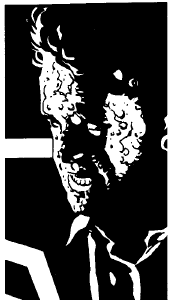
“The Toller” can leave scars so severe they affect your Attractiveness rating.
Geopolitics! The US is firmly in decline, superseded by rising powers elsewhere. After both political parties exploded around the turn of the millennium, an archconservative named Patterson came to power in the wake of his predecessor’s assassination (possibly at his own hand). Patterson blamed it on an “Army of Satanic Order” he probably made up and basically started up the Satanic Panic again. After a few decades the US government’s decayed into a pseudo-theocratic dictatorship under his successor, a former secret police administrator named Hammond. It’s pretty standard dystopian stuff; everyone has a citizenship status, censorship is universal, the secret police has a god-awful nickname, etc. For some reason the US diplomatically annexed both the bulk of Mexico and Cuba, though the latter is going through yet another revolution right now; while now US citizens in theory, they are effectively second-class citizens because, you know, neocons. Canada has broken into independent parts, while Alaska keeps its distance from the central government and remains actually democratic. What about Central America and the Caribbean? What about Central America and the Caribbean?
In South America, Brazil’s been turned into a giant nature preserve by the Russo-Japanese (more on them in a bit) and most other countries are relatively prosperous but struggling with massive drug cartels growing cyber-cocaine and techno-heroin. The big exception is Chile and Argentina, which now, unified as – wait for it – Chiletina, position themselves as the world’s fastest growing economy and “the upstart of the 21st-century international scene”. If it’s cutting-edge and not from the Russo-Japanese, it’s from them. If it’s not from either of those two, it comes from somewhere else in the Pacific Rim; any of the Asian Tigers, Southeast Asia, the Philippines, etc., all of which are growing and prosperous. Singapore is both the region’s unofficial capital and the center of its black market.
The book doesn’t even mention Indonesia  . Sorry guys.
. Sorry guys.
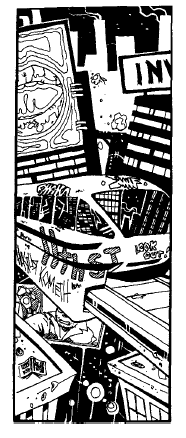
Disneyland’s doing better these days.
Europe’s done pretty well for itself – it’s formed the European Union United Europe as a coherent, united political entity. Unlike the EU, its members seem to have some internal independence but operate as a single political unit abroad; the UE has accepted its status as a secondary power compared to rising stars elsewhere and European companies pop up frequently whenever the book dips into technology. The Middle East is in worse shape. Israel has… somehow… unwittingly taken over huge swathes of neighboring territory and is struggling not to turn into a hellstate or explode, while most Muslim countries (especially Iran, which absorbed Iraq) spend their time squabbling and jockeying for influence. Everybody’s nervously watching the closest thing the region has to a rising power: the Central Asian Federation, a militaristic dictatorship eyeing its neighbors for territory. This will be the first and last time the book mentions Central Asia.
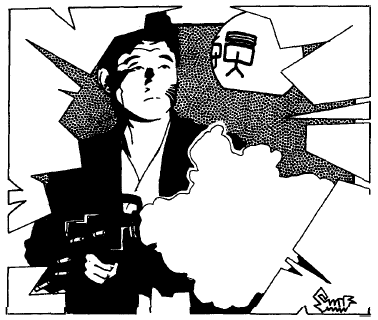
How jaded do you have to be to look that bored firing a submachine gun?
But as much as the US, Europe, Chiletina, and various other powers around the world might try, they can’t compare to the Russo-Japanese Economic Union. Originating in an agreement between the CIS and Japan that was supposed to relieve the economic troubles and disorder of the former and of the overpopulation (hah!) and resource shortages of the second, it’s morphed into the planet’s economic, industrial, and even cultural center. Like, a good half the setting's most powerful corporations have Russian or Japanese names. Of course, there’s a brewing power struggle between the wealthier Japanese part and the resentful rest of the Union, but that has yet to boil over.
Australia just kind of… got depopulated. Everyone on the Australian mainland got killed by a mysterious disease in just six months a few ways back, so the island’s been quarantined for the next few decades just in case (its neighbors and Tasmania are just fine). Best guess to what happened is a Chinese bioweapon gone off prematurely, but no one knows for sure. Right now, anyone who heads into the Outback (mostly disposables sent in in secret by various powers) disappears after about a week, but satellites still pick up some low-tech activity deep in the interior. Can you say “Mythos activity”? I can’t!
Speaking of which… oh boy, it’s time to cover Africa, India, and China.
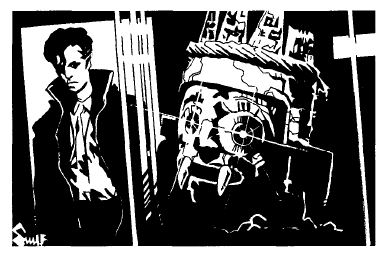
We’re covering THIS now.
I’ll cover the book’s approach to issues of race and Lovecraft (and its successes and failures) in detail when it comes up later on, but it boils down to this: if one postulates a universe full of forces completely beyond humanity’s power to grasp or struggle with, the artificial definitions of race and culture look ridiculous. Lovecraft was so obsessed with race () he had an identity crisis when he discovered he might be part Irish; his concept of racial hierarchies ran so deep he felt he had to organize the universe along those lines. The author believes that undermines the point. A fear of incomprehensible outside forces runs through all of us, so portraying those forces as inherently unknowable foils any attempts to come to terms with and control them – a solid basis for a horror story. Sorting humans by appearance categories defeats the point. Racism is so mundane and social that, for anyone who isn’t Lovecraft or thinks like him, it just dilutes the cosmic horror and makes it look petty. Instead, the author chose to mix cosmic horror with cyberpunk, a genre also characterized by incomprehensible forces crushing people, but one where Lovecraft’s perfect Anglo-Saxon society has collapsed under its own rotten bulk and cultures from other parts of the world are calmly taking its place. It flips that script – societal change shaped by impersonal economic and cultural forces becomes another aspect of an incomprehensible universe. If so, no section of humanity is inherently better or worse than another; all of us are attempting to survive in a reality that barely acknowledges the differences between us before it runs us over.
And then they pull shit like this.
It isn’t that the author brings up racist themes when covering Africa, India, and China; he barely brings up anything. The description of India and Africa essentially reads ‘screwed over by the Grand Slam and not visited much’, while China just shut itself off from the outside world a couple decades back and nobody knows what’s going on inside there. But it’s no accident that the author declares the African continent and Indian subcontinent disorganized and, well, he actually describes those regions as being without civilization. Sound familiar? He’s just returned he extremely complex and sophisticated peoples and cultures to a uniform low so your characters can head out and be scared of natives in the jungle. And China? It’s no mistake that he’s had China seal itself off from the outside world. It neatly invokes Qing isolationism and the way Communist China sealed its borders to create The Mysterious East once again, ripe for GMs to insert Orientalist themes theoretically debunked the better part of a century ago. And let’s not forget, the non-Anglo-Saxon cultures that are rising to fill the gap? A union of two former colonial powers and one of the successors to another. You can’t do this in half measures, guy.

I really do believe there’s something to be said for cosmic horror and that this book has entertainment value, but you gotta untangle it from its roots first. Half-assing it doesn’t do anybody any favors.
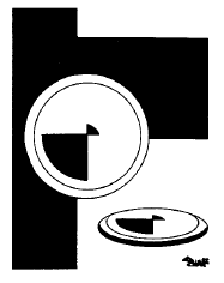
Have a picture including no human beings.
Typo of the Day: Rurro-Japanere
Next Time: how can most members of a culture that spends all day on the Internet be only semiliterate?